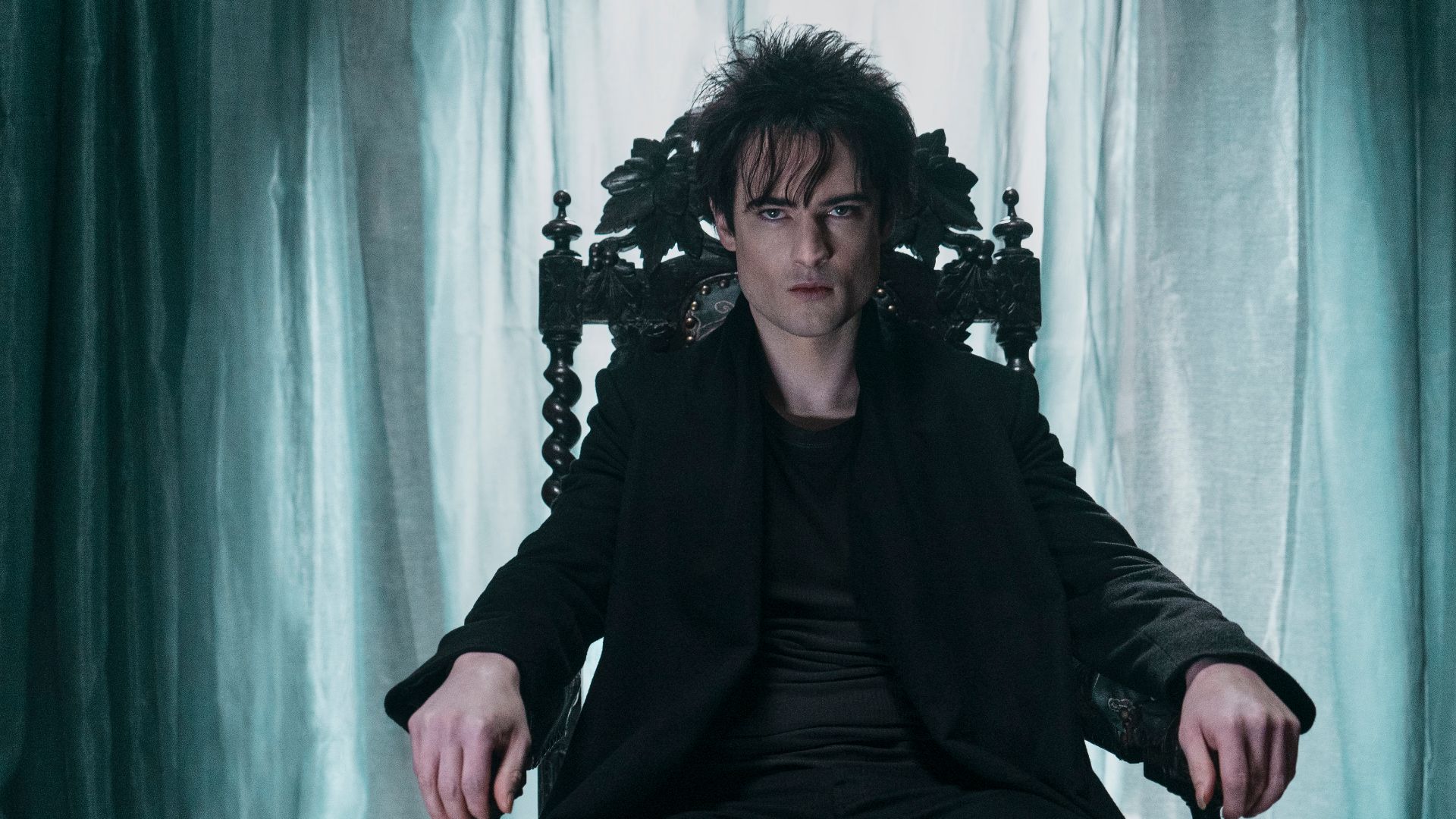GamesRadar+ Verdict
"The Sound of Her Wings" glues together two of The Sandman's greatest stories, allowing neither the required room to breathe. However, these are still great stories, and the TV series pulls it off
Why you can trust GamesRadar+
For many Sand-fans (Is that a thing? Probably not…) The Sound of Her Wings is one of the most beloved chapters in the entire saga. Acting as a buffer between the series' first two major arcs, it uses the slightest of plots – Morpheus shadows his sister Death (Kirby Howell-Baptiste) on an average day at work – to reflect touchingly on the nature of mortality.
The TV adaptation also does that – like the rest of the season, it's painstakingly close to the source text – but crushes it all into 20-ish minutes, before shifting focus to tell a different story entirely. The back half of the episode is an adaptation of Sandman #13, Men of Good Fortune. The result is a tonally bizarre mish-mash that will likely delight some and infuriate others.
So, that first half. It's an unspecified amount of time after John Dee's defeat and Morpheus is feeling listless. As he wonders aloud to his sister, he completed his quest, recovered his tools, and is now more powerful than ever. So why isn't he happy? On a walkabout with Death, he gains a new appreciation for the fleeting beauty of human life. They visit an old violinist, a recent groom, and – tragically – a baby, who passes away in their cot. The day goes on and Dream starts to realize just how far he has drifted from the humans he was created to serve.
Which, OK, fine. There's an undeniable emotional heft to some of these scenes and Howell-Baptiste is well-cast. But something feels like it's been lost in the translation between mediums. On the page, the rapid succession of different fatalities – depicted as alternately peaceful, shocking, funny, and tragic – are easier to accept. On-screen, though, it feels a little trite and maudlin. One minute we're watching a painfully sad cot death, the next we're seeing a dumb, horny football player gets hit by a car, complete with comedy tire screech sound effect. The tonal shift is enough to give you whiplash.
Later, Dream decides to pay a visit to an old friend. Cue a flashback to 1389 and a visit to The White Horse Tavern with his sister. There, the pair meet Robert "Hob" Gadling (Ferdinand Kingsley), a loudmouth drunk who declares that he will never die. On a whim and partly to amuse her brother, Death grants Hob's wish and makes him immortal.
What follows is a succession of vignettes as Dream meets up with Gadling on the same night in the same pub once every 100 years. Initially cowed and afraid of this pale, apparently nameless, stranger, Hob soon grows cocky and arrogant. Life is good and he uses his supernatural longevity to leave soldiering behind and become first a printer, then a shipping magnate. With that comes a brief and ugly dalliance with slaving and a run-in with Lady Johanna Constantine (Jenna Coleman), an ancestor of the scuzzy occultist we met in episode three. When Hob suggests that Morpheus is lonely and just wants some company, however, the Sandman is enraged and storms off in a huff.
We cut to 1989 and Dream does not show up for their regular meeting. Hob assumes that he is still angry with him, but in fact Morpheus is languishing in Roderick Burgess’s glass prison. Perhaps this period of isolation gave him time to reflect, however. In the present day we see Dream track his old acquaintance down and acknowledge that yes, Hob isn’t just a plaything or an experiment, he's a true friend. Now, who’s getting a round in?
The first time I watched this episode, I was annoyed. It's based on probably my two favorite individual issues of the comic and I remain unconvinced that simply gluing them together into an hour of TV like this actually works. Yes, there's a thematic link there, but it's pretty tenuous. The Sound of Her Wings portion needs space to breathe and compressing it into 20-odd minutes is a really peculiar choice.
That said, the Men Of Good Fortune sequences are very likeable indeed. For the first time we're really getting a sense of the vast scale of this story. Ferdinand Kingsley is impressive, too, bringing both a sleazy arrogance and eventually a sincerity and hard-won emotional maturity to the character. And after the heaviness of "24/7" and the darkness to come in the next arc, a bit of light relief is welcome indeed. Next up, it’s the return of the Corinthian…
Analysis: How it compares to the comics

The TV show skips the on-stage electrocution of Esmé the stand-up comic.
Having Dream miss his present-day meeting with Hob because he was incarcerated by Roderick Burgess is a smart revision. In the comic Dream appears to have simply gotten over his big strop.
Fables and reflections
Sometime between 1789 and 1889 Dream encounters Lady Johanna again and commissions her to undertake a task for him.
Death references Mad Hettie, who we met back in episode three played by Clare Higgins.
Will Shaxberd – AKA William Shakespeare – and Morpheus strike an off-screen bargain, the nature of which should become clear in Season 2 (if we get it).
The Sandman is now streaming on Netflix. For more streaming options, check out our list of the best Netflix shows available right now.
More info
| Genre | Fantasy |


